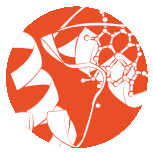
Understanding water use in BC
I recently found out that over 95% of the electricity produced by BC Hydro comes from hydroelectric sources, which floored me. I grew up in Alberta, where the majority of power comes from coal and natural gas, so my concept of electricity sources doesn’t include water, except for as a possible “alternative” energy source. But there’s nothing alternative about 95%. And after thinking “Wow! That’s amazing!” I started asking questions: How much water do we even have? What about drinking water? What about the fish?
Those are big questions, and really important ones. We’ve used dams for over 100 years in BC, so it’s critical for us to examine their impact on our ecosystem. BC Hydro predicts that demand for electricity in BC will grow by 40% over the next 20 years, so our reliance on hydroelectricity and the future of water use in BC is a major issue.
One way that BC Hydro is answering those questions is by engaging in water use planning. A water use plan sets specific and measurable limits for hydroelectric facility operations. The goal of water use planning is to make sure that we can get the electricity we need while minimizing impacts on the environment, particularly on fish and other wildlife.
Dams have also affected First Nations by forcing resettlement and changing traditional fishing practices. Although these social issues aren’t directly addressed in the water use planning process, First Nations and other community groups are included in the discussions, which are meant to be collaborative and integrate a variety of perspectives.
In October 2014, WWF-Canada published Water for Power, Water for Nature, a report that describes the water use planning process in BC and analyzes its impacts. Talk Science to Me copy-edited and proofread the report, which is available for free and is a great example of how policy can be described in a way that’s easy to understand. The decisions made through the water use planning process will have an impact on all of us, so we deserve access to documents that explain these decisions to us.
We’re excited about our collaboration with WWF on this project, not only because of the high quality of the report, but because WWF is committed to carrying out science-based research to meet its goals of evaluating our impact on the planet and answering the big questions we all have about our environment. We’re proud to contribute our expertise to that goal.

No Comments